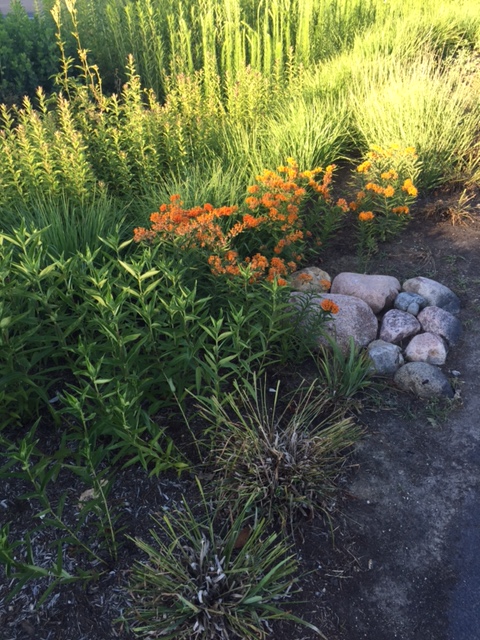What is rainscaping?
 Rainscaping includes the use of sustainable landscape design and management practices at both the household and community scales to prevent polluted runoff from reaching water bodies by directing stormwater to be absorbed by plants and soils. Community water quality potentially affected by homeowner landscape management practices could be improved through increased community education and implementation assistance of rainscaping best management practices.
Rainscaping includes the use of sustainable landscape design and management practices at both the household and community scales to prevent polluted runoff from reaching water bodies by directing stormwater to be absorbed by plants and soils. Community water quality potentially affected by homeowner landscape management practices could be improved through increased community education and implementation assistance of rainscaping best management practices.
Rainscaping practices can range from simple solutions to more complex engineered systems and include:
- Installing rain barrels to collect rainwater to irrigate landscapes
- Constructing bioretention areas such as bioswales and rain gardens
- Disconnecting downspouts from storm sewers and redirecting into lawns or gardens
- Maintaining and protecting existing trees and shrubs and other natural features
- Selecting appropriate plants – the right plant for the right place
- Reducing impervious surfaces through installing brick pavers, pervious concrete, or gravel in place of traditional concrete or asphalt
- Planting buffer strips around water bodies